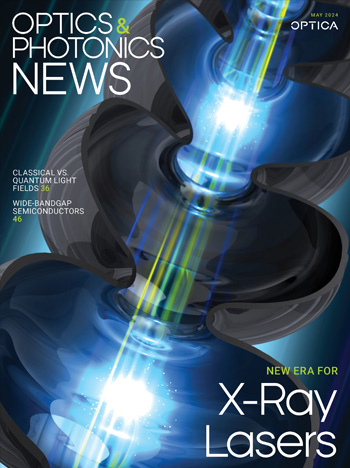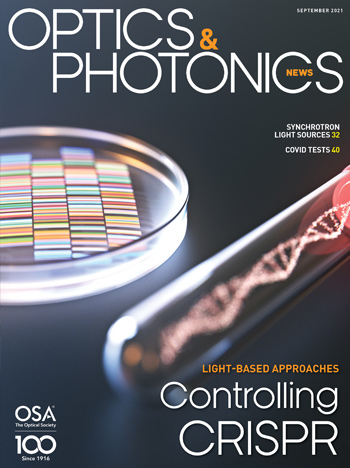
September 2021 Issue
Feature Articles

Controlling CRISPR
Light-based approaches for steering CRISPR–Cas9, the powerful Nobel Prize–winning genome-editing toolkit, promise to boost the technique’s precision and specificity—and might help bring it into clinical use.
by Meeri Kim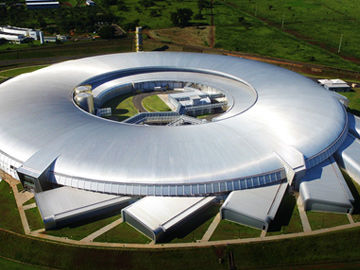
Synchrotron Light Sources for the 21st Century
Labs on five continents are upgrading their storage-ring synchrotrons and free-electron lasers to make their X-ray beams brighter and more adaptable to scientific and medical applications.
by Patricia Daukantas
The Search for a Better COVID Test
Researchers are drawing on optics and photonics to improve the current “gold-standard” approach to coronavirus diagnostics—and to develop promising alternatives.
by Stewart WillsDepartments and Columns
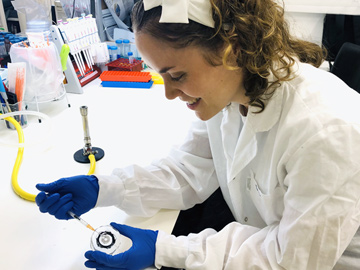
Research and Industry News
Diffractive optical elements / Deep brain imaging / Greenhouse gas detection / Cold-atom source / Liquid-crystal metalens / “Super laser” for taming lightning / Global transceiver market / Quantum cooling at LIGO
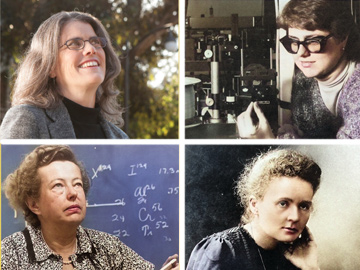
Nobel Women of Science
Next month, the Nobel Prizes for 2021 will be announced. Here we look at women who have received the Nobel Prize in physics, chemistry and physiology or medicine. For a closer look at recent advances in optics based on the 2020 Chemistry Nobel winners’ research, see this month’s cover story.

Advancing Trust in Science
The chair of the International Day of Light (IDL) steering committee urges action to stem misinformation and mistrust in science—and to improve scientists’ abilities to communicate with the public at large.
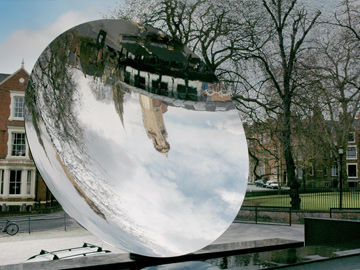
Beyond “Fire in the Soul”
The burning optical issues that underlie some modern art and architecture.
ADVERTISEMENT
ADVERTISEMENT
Also in this Issue
Supporting Global Innovation
30, 20, and 10 Years Ago in OPN
Jean Bennett; nanowire nanolasers; green laser diodes.
News from the Society
A cutting-edge OFC 2021 / Carney appointed OSA chief scientist / 5G Summit / OSA Foundation prize winners / Treasuer’s Award winners / Société Française d’Optique Congress / Congressional Fellows / OSA Fellow stories / Thank you, editors and volunteers
Confocal Microscopy of the Rat Hippocampus
OSA Financial Report
Summary of OSA financial statements from the past year.

![Infinity Mirrored Room– Brilliance of the Souls 2014 by artist Yayoi Kusama. [© YAYOI KUSAMA]](https://opnmedia.blob.core.windows.net/$web/opn/media/images/articles/2024/0724/departments/202407-cover-web.jpg?ext=.jpg)
![An experimental scheme demonstrated by researchers at Princeton and Yale universities, USA, can convert physical noise into errors that can be corrected more easily. [F. Wojciechowski, Princeton University]](https://opnmedia.blob.core.windows.net/$web/opn/media/images/articles/2024/0624/departments/202406-cover-web.jpg?ext=.jpg)
